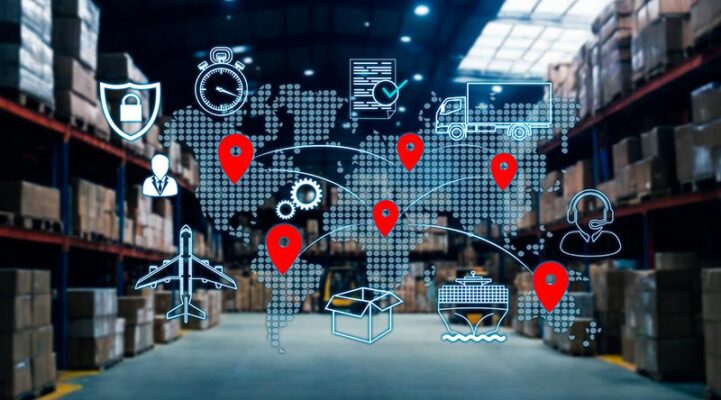5G and IoT: Use Cases and Applications for mMTC
By Sahil Bahri
November 14, 2024
Estimated reading time: 5 minutes

Massive machine-type communication (mMTC) is one of the three core 5G service categories. This technology enables power-sensitive use cases. 5G mMTC solutions can collect enormous volumes of small data packets from up to one million Internet of Things (IoT) devices per square kilometer.
Because of 5G service categories like mMTC, there will be over 29 billion IoT devices by 2030. While 5G rolls out, the resulting communications evolution will bring the world a more efficient, smarter future.
5G is the current cellular communication system generation. As an evolutionary standard, it is rolling out in phases.
5G operates non-stand-alone (NSA) with evolved 4G radio and core networks.

The 5G New Radio (5G NR) stand-alone framework and new core network set the foundation for a new era of wireless connections worldwide. It includes multiple access for connectivity technologies like satellites, Wi-Fi, fixed-line and cellular (as standardized by 3GPP). In this phase, 5G transitions to a stand-alone architecture and serves a wider range of IoT applications.
With IoT-enabled devices in mind, mMTC brings greater efficiency and higher capacity density. mMTC technologies have low data rate requirements and are energy efficient. They also thrive on deep, broad coverage indoors and outdoors. mMTC delivers:
5G’s adaptability also enables businesses and industrial organizations to connect more devices with better capability.
3GPP Releases (Rels) 17 RedCap and 18 eRedCap are also part of Phase 2. These releases give 5G IoT a far greater footprint to cover low mid-speed use cases.

As proposed by GSMA, mobile IoT refers to cellular low-power wide-area (LPWA) technologies using licensed spectrum bands. 3GPP narrowband IoT (NB-IoT) and Long-Term Evolution machine-type communication (LTE-M) technologies are 5G-era bearers of low-power, low-data IoT applications.
Cellular LPWA paves the path to 5G with undisrupted information flow. These 4G technologies continue under full support in 5G networks for many years and releases.
3GPP technologies like 4G LTE and 5G help businesses expand the reach of their IT and OT networks across hard-to-reach areas. They require an easily scalable deployment strategy and architecture.
Think of smart utility solutions in water and gas grids. Managers must remotely monitor environmental conditions from thousands of sensors, control valves and regulators to support consumer usage.
In addition, they must prevent or mitigate line breaks and other failure conditions across multiple sites. Managers must react in milliseconds to avert disaster and loss of life. IoT enables the tools and resources managers need.
Cellular networks are adapting to service billions of new devices. These devices require IoT connectivity plans and services that make the grade in business dimensions and technicality.
Enterprises deploying either NB-IoT or LTE-M are future-proofing their IoT projects. As 5G becomes commonplace, these mobile IoT standards will integrate with the latest 5G releases.
Rel 17 brought the initial release of NR RedCap, reinventing the mid-speed space. This includes applications that require longevity, such as:
Rel 17 has opened a new space of 5G. However, it was just the first wave.
The second wave ushered in by Rel 18 may be the 5G answer to LTE Cat M, Cat 1 and Cat 1 bis. Rel 18 will continue the RedCap evolution, bringing beneficial 5G features and extended power-saving features to mMTC.

mMTC 5G technologies support hundreds of thousands of IoT sensors, empowering businesses to boost efficiency while reducing power consumption. Examples of mMTC applications include:
With mMTC 5G IoT, facilities can send critical upgrades to networks without freezing functionality or overloading servers.
Current industries that will benefit from these mMTC 5G IoT enhancements include:

Smart homes, synced watch-and-phone IoT devices and fitness apps are commonplace. They will grow with the speed and performance capabilities of 5G mMTC. With reliance on mobile IoT on such a grand scale today, the 5G future will look completely different in the next 20 years.
We will see large-scale autonomous vehicle deployments and utility service automations like waste management. We will also see energy production through smart grids and smart environmental monitoring to reduce greenhouse gases and pollution.
Farmers will monitor and track crops, livestock and machinery through super-dense sensor networks. In smart cities, 5G mMTC will enable near-real-time data monitoring of utility usage and water management. The usefulness and reliability of smart lighting and traffic cameras would also improve tremendously. Moreover, enhanced tracking capabilities will help fleet managers increase efficiency and minimize lost or damaged assets.
Through 5G mMTC technology advancements, society will be more efficient and smart cities will live up to their name.
As a worldwide leader in IoT solutions, Telit Cinterion simplifies your enterprise’s evolution. We enable you to make the most of 5G mMTC solutions through our 5G data cards and RedCap and future eRedCap modules. Speak with our IoT experts and request to qualify for a global 5G data card sample today.
Editor’s Note: This blog was originally published on 13 February 2019 and has since been updated.